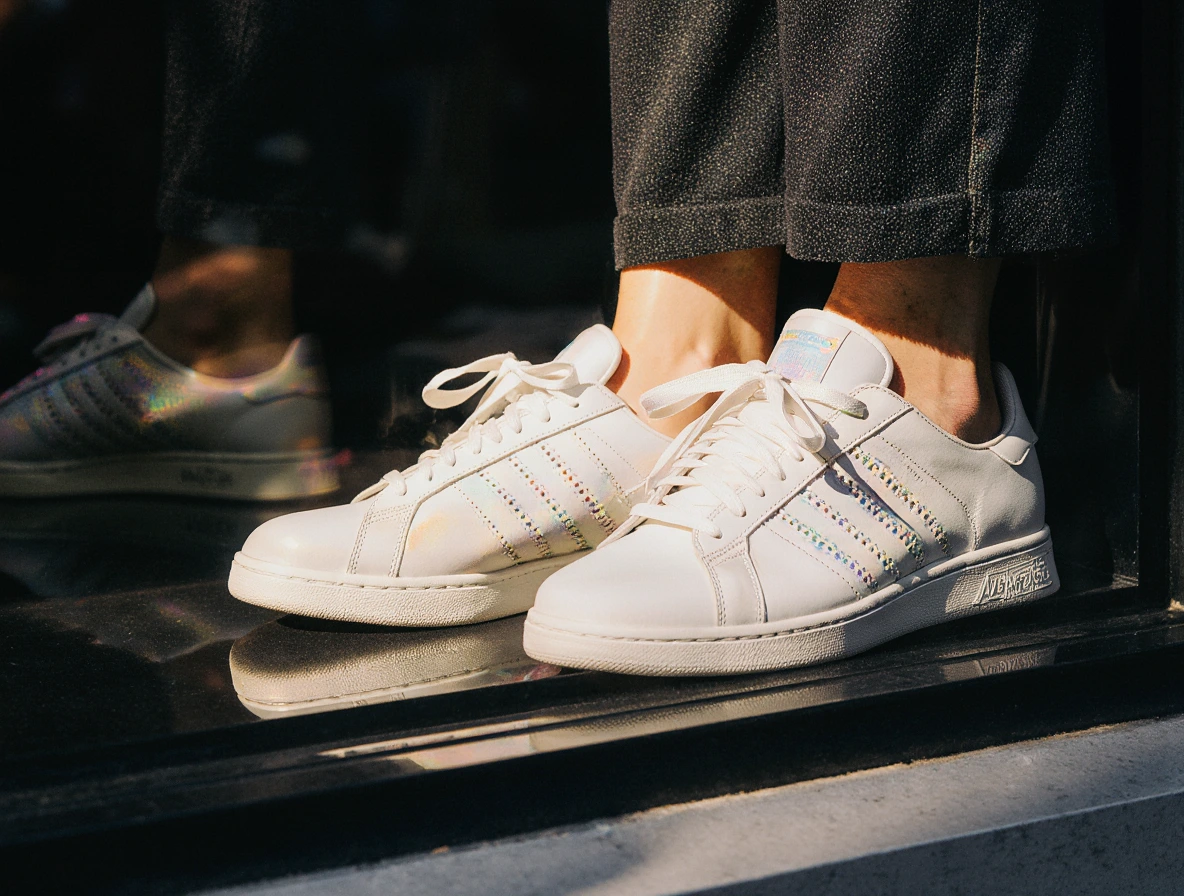
Roots Of An Athletic Retail Giant
Foot Locker’s story is not just a story about shoes and apparel — it is a story about adapting strategically, positioning a brand, and understanding shifting consumer culture. To understand Foot Locker’s current position as one of the largest athletic footwear retailers in the world, it is important to understand its history, which dates back long before Foot Locker existed.
Foot Locker’s story begins in the F. W. Woolworth Company retail empire, which was synonymous with a five-and-dime store in the first half of the 20th century. Woolworth’s story and legacy set the stage for a retail philosophy based on accessibility, volume, and continuous customer interaction. This approach was then successfully replicated to the athletic footwear category as Foot Locker.
Woolworth’s Legacy And Kinney Shoes Origins
Kinney Shoes, founded in 1894, was established shortly thereafter. Kinney was a company that provided good quality footwear at competitive prices. This appealed to working class consumers. The accessibility theme fit right in line with Woolworth’s.
By the 1950s Kinney Shoes had established a strong regional presence in the United States and other territories competing in markets that had not yet established a strong stable of specialty athletic retailers. Kinney Shoes no frills – consumer friendly business model of selling shoes that were functional and at fair prices would eventually converge with the entire sports-driven branding that became Foot Locker’s hallmark.
Transition From Five-And-Dime To Footwear Focus
The change from Woolworth’s general merchandising strategy to a focus on footwear occurred gradually but purposefully. Woolworth understood the trend toward specialized retail. As consumer preferences expanded, so too did Woolworth’s retail strategy.
By the late 1960s, athletic footwear was beginning to feel like a cultural juggernaut as basketball became a dominant sport, jogging evolved into a profitable business, and fitness culture began to infiltrate society. Woolworth and Kinney recognised the market potential: they could build a dedicated store for athletic footwear and apparel that would penetrate the sports performance space as well as emerging lifestyle segment.
Key Takeaway 1: Strong Foundations Build Longevity
The later success of Foot Locker would rely upon a combination of these values when starting up: a proven retail concept, unique brand awareness with customers, and value proposition. Without the combined company profile and history of Woolworth’s and Kinney’s, Foot Locker would not have enjoyed the same brand credibility and operational framework that facilitated such rapid scaling.
Pivotal Merger And Market Growth
The merger of Woolworth and Kinney Shoes was more than just a transactional merger but an early example of a new category in retail. The combined strengths of general retail and a strong footwear specialty opened the opportunity for the merged company to appeal to occasional customers and loyal shoppers.
Woolworth’s Acquisition Of Kinney Shoes
Woolworth purchased Kinney Shoes in 1963 and immediately became part of the national shoe-selling community while expanding its asset mix and positioning itself to capitalize on America’s emerging consumerism. Kinney’s semi-independent operation gave it some freedom to innovate, depending on Woolworth’s corporate identity and enormous infrastructure.
Post-War Expansion And Industry Influence
The boom in post-World War II job creation and disposable income made for a consumer class eager for choice and opportunity. Footwear was no longer simply a utility purchase, but a way to express oneself. Kinney Shoes thrived in this market with over 220 stores across the United States and a reputation for reliability.
The athletic footwear sector was gaining steam and showing indications of explosive growth. Brand awareness for Nike, Adidas, and Puma was on the rise and Kinney Shoes saw the opportunity in becoming a retail partner where the brand partners could show their products in a specified retail space.
Key Takeaway 2: Capitalizing On Strategic Moments
Timing is crucial. Woolworth’s acquisition of Kinney in the early 1960s – at just the right time when football culture was just starting in the US – prepared the company well to respond to the impending fitness and sneaker boom. Strategic acquisitions at the right time can provide long-term competitive advantage.
Emergence Of The Foot Locker Brand
Foot Locker launched in 1974, with its first store located in the Puente Hills Mall in California. The concept was visionary for its time — a store dedicated solely to athletic footwear and apparel that expressed a unique sport credibility through staff outfitted in referee-like uniforms.
Opening The First Foot Locker Store
The first store had an immediate impact as it provided customers with an experience never seen before — a specialty shop dedicated to athletic products, treating shoes as both gear as well as a fashion statement. This innovative approach connected to athletes, casual wearers, and fashion leaders overall.
The Referee Uniform As A Brand Symbol
One of the most visible brand choices was the use of the referee’s uniform for store associates. It wasn’t merely a strange choice of style — it reinforced Foot Locker’s sporty image making the company instantly recognizable. This part of the branding messages became a cultural reference point and appeared in advertising, pop culture references and comedy sketches.
Global Expansion In Athletic Footwear Retail
By the late 1980s and 1990s, Foot Locker was ready to gone global, expanding into markets such as Europe, Asia, and Latin America. Foot Locker became the go-to retailer for sneaker launches and often would get first rights to product launches with the other major sportswear brands. Exclusivity helped create brand loyal customers and cemented Foot Locker’s place as a tastemaker in sneaker culture.
Key Takeaway 3: Branding As A Competitive Edge
Foot Locker understood that branding was not just a logo. It was the emotional connection with customers, and a result of price. Strong branding can purpose a commodity product to a culturally relevant icon.
Foot Locker In The Modern Marketplace
In the 21st century, Foot Locker has had to adapt to a rapidly changing retail environment shaped by e-commerce, shifting consumer values, and an increasingly competitive sneaker market.
Digital Innovation And E-Commerce Growth
In reaction to the trend of consumers buying online versus at retail stores, Foot Locker made a substantial investment in e-commerce platforms, mobile apps, and digital marketing campaigns. In many uses, Foot Locker integrated the online experience with brick-and-mortar shopping by developing features like “buy online, pick-up in store” and enabling consumers to see exactly what inventory was in stock at their ordering location.
These innovations allowed Foot Locker to keep becoming relevant to modern-day consumers, including not just millennials, but technology-driven Gen Z shoppers while keeping its stores relevant as experiential venues for sneaker enthusiasts.
Acquisitions Strengthening Market Position
Foot Locker has made strategic decisions to acquire and/or partner with companies that complement Foot Locker’s core business segments, most importantly through partnerships and/or acquisition of GOAT (a sneaker resale platform) and smaller overall streetwear brands. Through these moves, Foot Locker has been able to leverage the growing resale market and establish themselves within streetwear culture and community, ensuring that the retailer remains immersed in the fashion dimension of sneakers.
Community Engagement And Social Responsibility
Foot Locker has been importantly striving to be recognized as more than just a retailer as well. Programs that fund community-based programming, support for minority owned businesses, partnerships with athletes to support charitable causes speak volumes about the company’s intentions.
Key Takeaway 4: Staying Relevant Through Innovation
In a retail reality where trends can change overnight, Foot Locker has demonstrated that continuous innovation, whether technology, culture, or community based, is key to longevity.
Today’s Foot Locker And Future Outlook
Today, Foot Locker operates thousands of stores across the globe, and also offers an online interface for its customers to access its services. Although the company faces pressure from direct-to-consumer sales and efforts by major brands, namely Nike and Adidas, the company is still a critical player as a curator of sneaker culture.
Current Market Standing And Global Reach
As of the last couple of years, Foot Locker is still a leader and is one of the largest athletic retailers in the world, operating on over 25 continents. The company’s global strategy is both national and local at the same time; larger urban centers feature flagship stores while effectively and properly curating retail in localized markets, ensuring that they are relevant to their target customers across different demographics.
Evolving With Consumer Preferences
Consumers have changed their preferences… athleisure, limited-edition drops, sustainable brands, and Foot Locker has responded with working with eco-friendly brands, stocked a wider range of lifestyle products, and has remained focused on exclusivity.
Enduring Lessons From Retail Leadership
The Foot Locker story shows us that retail success is driven by flexibility, good branding, and a keen understanding of the consumer. The company has grown from five-and-dime shoes into a massive worldwide sneaker empire. More so, the state of Foot Locker represents the rewards of recognizing opportunity at the right time and holding true to a core identity.
